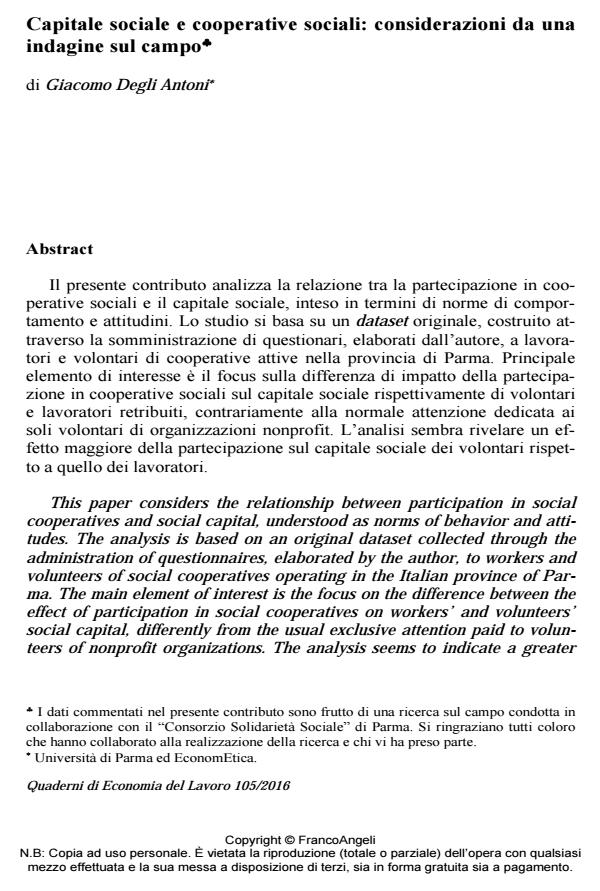Capitale sociale e cooperative sociali: considerazioni da una indagine sul campo
Journal title QUADERNI DI ECONOMIA DEL LAVORO
Author/s Giacomo Degli Antoni
Publishing Year 2017 Issue 2016/105
Language Italian Pages 13 P. 151-163 File size 191 KB
DOI 10.3280/QUA2016-105007
DOI is like a bar code for intellectual property: to have more infomation
click here
Below, you can see the article first page
If you want to buy this article in PDF format, you can do it, following the instructions to buy download credits

FrancoAngeli is member of Publishers International Linking Association, Inc (PILA), a not-for-profit association which run the CrossRef service enabling links to and from online scholarly content.
This paper considers the relationship between participation in social cooperatives and social capital, understood as norms of behavior and attitudes. The analysis is based on an original dataset collected through the administration of questionnaires, elaborated by the author, to workers and volunteers of social cooperatives operating in the Italian province of Parma. The main element of interest is the focus on the difference between the effect of participation in social cooperatives on workers’ and volunteers’ social capital, differently from the usual exclusive attention paid to volunteers of nonprofit organizations. The analysis seems to indicate a greater effect of participation on the social capital of volunteers compared with that of workers
- Investigating the link between social cooperation sector and economic well‐being of Italian provinces through the lens of social capital Giuseppe Terzo, in Annals of Public and Cooperative Economics /2022 pp.1041
DOI: 10.1111/apce.12349
Giacomo Degli Antoni, Capitale sociale e cooperative sociali: considerazioni da una indagine sul campo in "QUADERNI DI ECONOMIA DEL LAVORO" 105/2016, pp 151-163, DOI: 10.3280/QUA2016-105007